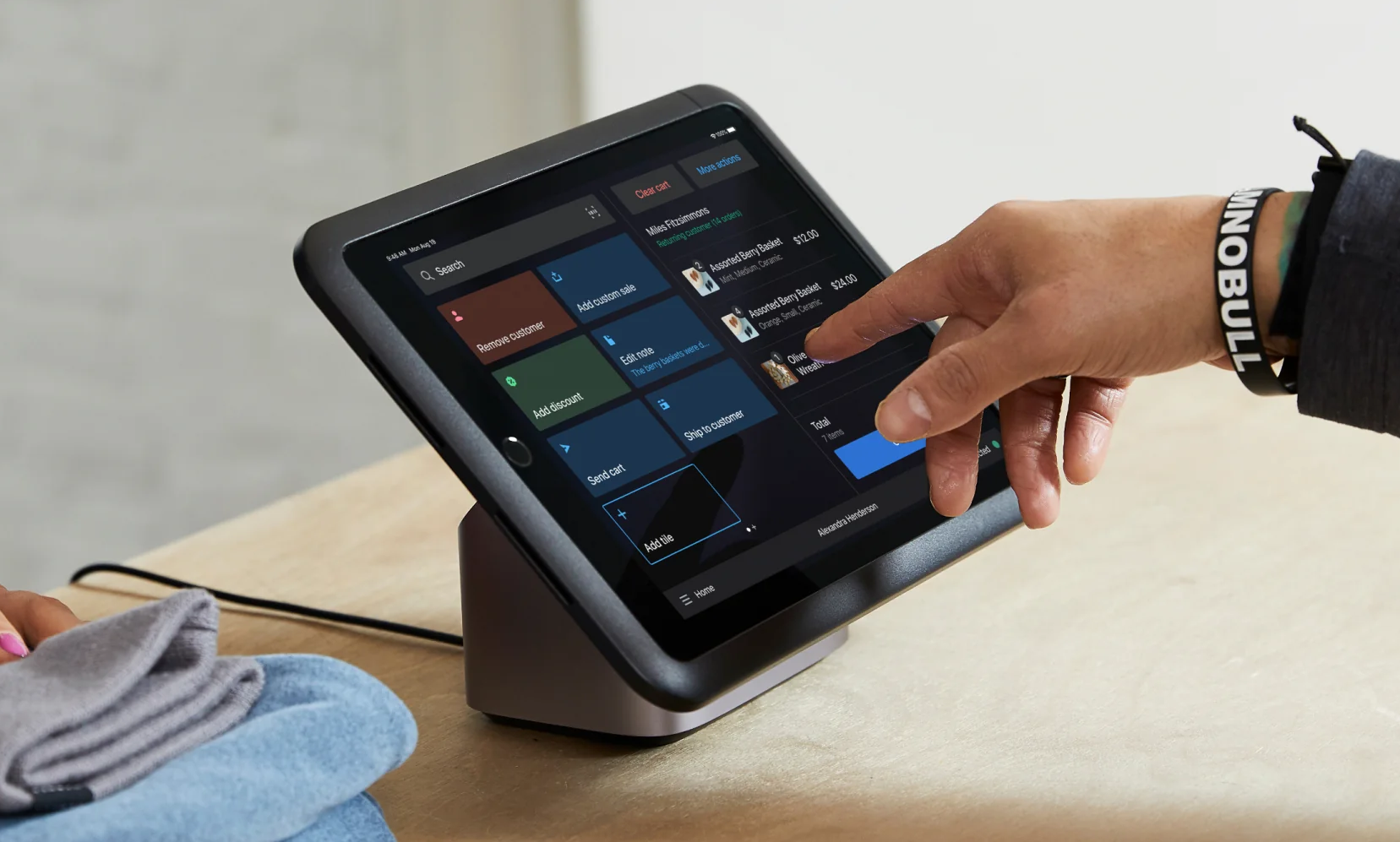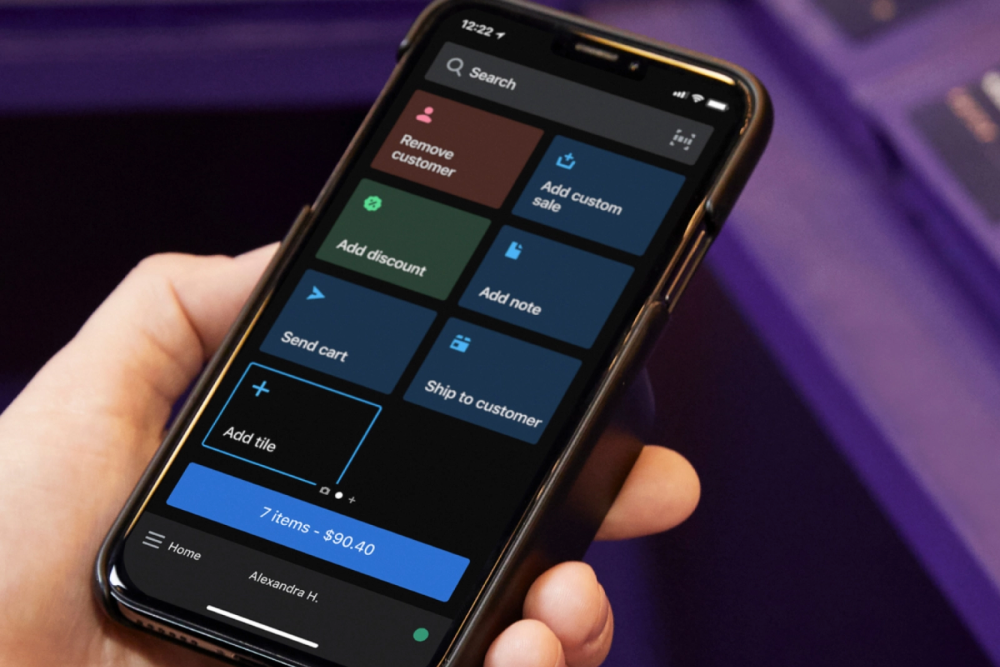01 Apr 2024
Shopify POS: The Latest Developments for an Even More Powerful Omnichannel Commerce Experience

Selling online is an important strategy, but sometimes it’s essential to have a unified commerce experience in a physical environment with point(s) of sale. Shopify POS, or Point of Sale, is a simple and effective solution to create a consistent shopping experience across different commerce channels.
At Novatize, we have experts who can help you make the transition to unified commerce. Find out if your company is ready for unified commerce.
What Is Shopify POS and What Are the Main Benefits?
With Shopify POS, businesses can manage inventory, track sales and customer data, and process transactions. This can be done from anywhere, whether it’s in a store, a pop-up store or a trade show. The system provides access to a multitude of data on your customers and their purchase profile. It also supports the use of digital and physical gift cards.
The basic functionality is sufficient for good management, but Shopify POS is also a very flexible and scalable solution thanks to the apps offered on the Shopify App Store.
Shopify POS offers powerful marketing tools to help businesses streamline their operations and grow their sales. Examples include: payment gateways, accounting software and marketing reporting tools. Overall, Shopify POS is a powerful and flexible system that offers a range of features and integrations to help merchants manage their sales and grow their business.
Every year, Shopify introduces several new features that will enhance the overall experience of using Shopify POS. These announcements may allow some merchants to reduce the cost of use by limiting the number of third-party applications. Among the new features is POS Go, a feature that allows for more efficient management of inventory and custom payment pages.
To learn more, check out this article: Unified Commerce and Omnichannel: Strategies for a Consistent eCommerce Experience
What is POS Go?
Available only in the U.S. for now, this new feature, which should arrive soon in Canada, will allow Shopify POS users to have a way to complete a customer’s shopping cart at the same time as advising them. This addition to the service allows employees to take payment directly from customers on the floor without the need for a traditional cash register. POS Go makes it easier for the sales team to offer a personalized experience. It’s possible to have the customer’s profile in front of you while you advise them and add products to their cart. Your recommendations will be based on the customer’s buying habits. The level of guidance and advice will be improved to ultimately improve customer satisfaction and retention.
It is then possible to proceed directly to payment. If a customer isn’t ready to check out, they can simply save their shopping cart and make the transaction online later. This allows merchants to send reminders or even personalized offers based on the customer’s specific journey.
New in Shopify POS: Transfer stock between locations
To enable faster and more efficient in-store inventory management workflows, Shopify’s recently launched POS UI extension technology is being leveraged to create native application-like inventory management workflows accessible with a single click, starting with stock transfers.
Thanks to the new stock transfer extension available for the Smart Grid, you’ll be able to maintain balanced stock levels and low inventory costs. This new transfer extension enables staff to view and receive incoming transfers from other locations directly in the POS, which can help them to manage stock upstream and improve day-to-day inventory operations.
New in Shopify POS: Allocation of sales to staff members
Sending the shopping cart to the POS is a feature that is widely used today and represents many potential omnichannel sales opportunities.
With this new feature, when a customer completes an online payment from the link emailed from your store, Shopify gives you the ability to send the completed shopping cart with all the details of the sale to the POS channel and staff members who were involved in the sale. This update also includes a reporting change to reflect retail attribution in the reports for sales by channel, retail sales by POS location, retail sales by checkout staff and retail sales attribution by staff.
This enhancement gives you a clearer picture of store and staff performance. In the long term, this new feature can help motivate staff to close more sales and gain recognition for those sales.
New in Shopify POS: In-store returns data
Collecting data on the reasons why customers return your products can provide a great deal of valuable information about your product offering and its performance. You can add a database structure to your returns flow that allows you to harvest the different reasons for in-store returns, helping you gain insights into product issues, customer preferences and return dissatisfaction.
Staff members can now select from a static database of return reasons when executing a return. For additional details on a return, employees can add a note directly in the POS for each item.
New in Shopify POS: Shopify tax on POS orders
To help you run a more efficient and compliant business, including sales tax management, Shopify has enhanced Shopify Tax functionality to support your POS orders.
With Shopify Tax, you can now ensure compliance even as tax regulations change. Your POS experience will be more efficient thanks to more accurate tax collection and product-specific tax rates applied automatically. You’ll also have access to enhanced tax reports and information on tax obligations.
Is your business ready for unified commerce?
Download the unified commerce white paper for free
Features in Shopify POS: Inventory Management
It will now be easier for your staff to track inventory movements using this new POS feature. Starting today, it is possible to track inventory in multiple statuses.
Available: The physical inventory that is displayed in a store. It is not the inventory available for sale.
Available: Units available for sale.
Assigned: Units that are going to be in a transfer from your store to another or in an unprocessed order.
Not Available: Products are either out of stock or in an order to be picked up in store or delivered.
Incoming: Any inventory that is coming into your store from a warehouse transfer or from another store.
It will be possible to find this information directly in the product file on the POS or via the Shopify administration tools. Employees will have a better visibility on the actual inventory available for customers in the store. Inventory errors will become rarer and you will have real time information for your customers in the store. If you share in-store availability on your website, these statuses will allow you to provide the best data for your customers before their visit.
Learn more about reverse logistics.

Features in Shopify POS: Personalized payment
The Shopify POS app is customizable, but so are the payments. Shopify provides you with apps and settings that allow you to tailor your payments for your customers.
Basically, it is possible to select the type of information you want to show to customers on their invoice. You can display your company and/or customer information. The details of the promotions can be shown or not to highlight the discounts to your customers.
To go beyond the basic settings, use the applications at your disposal to enhance your shopping experience. With the Customer View application you are able to add the option to tip for all your transactions, but also offer options for invoice sending methods (Print, Email, SMS).
Features in Shopify POS: New locations
For all Shopify POS users, it is now possible to have up to 1000 stores without the need for an app. Everything is now centralized in the same Shopify interface. This new feature is even more interesting with the new inventory statuses. In addition to the number of locations, it is possible to use Shopify Payments in 14 countries!
Shopify is becoming a reference for the unified eCommerce and retail experience. This tool is easy to use and very accessible for all types of businesses. The many settings and applications available allow you to find a way to get the best solution for your customers and employees. You will be able to increase your level of satisfaction both internally and externally.
Discover the trends to watch in eCommerce logistics.
If you want to implement a successful unified commerce strategy, contact a Novatize expert.
📍 330-330 Saint-Vallier Est Street, G1K 9C5, Québec, QC, Canada
Inspired by what you’ve read?
Our team of experts can help you take your eCommerce to the next level!

